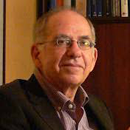
This article was published in the Swedish Form magazine (Number 9/1969). The author, Eva Björklund was one of the members of the pioneering design team headed by Ivan Espín within the Cuban Ministry of Light Industry in the late sixties. Their work, as that of other Industrial Designers then proposing a new path for Cuban Design has been omitted, up to now, from all the official publications.
Text, drawings and photos by Eva Björklund.
Translation: R. Togores.
Text, drawings and photos by Eva Björklund.
Translation: R. Togores.
Eva Björklund, Architect SAR1, has been for a year part of a Cuban task force engaged in developing a furniture program for the huge investment in housing construction planned for the early seventies. The shortage of materials has led to versatility and clean, functional forms.  When the Cuban Revolution began in 1959, it inherited a desperate housing situation. 85% of the housing needing replacement. Along with the annual housing demand resulting from demographic growth, this means that the revolutionary government will have to build two million homes over a 30 year period. During the past ten years the most pressing problems in rural areas and urban slums have been solved, but the resources have been devoted mainly to agricultural rationalization and building up industry. These great housing problems must be dealt with in the early 70s. The goal is to build 100,000 housing units per year. The present low housing standards are matched by the poor household equipment existing, that also needs to be replaced. For the most part the new homes are to be handed over fully furnished to their future owners. The planned housing will thus require a corresponding investment in furnishings. Traditional Cuban furniture was made out of wood, handcrafted. But wood is no longer available. Cuba's precious woods forests, especially rich in mahogany, were plundered during the imperialist period. Other indigenous materials for furniture production hardly exist, and the North American blockade restricts the importing possibilities. Traditional manufacturing methods, even if they could be rationalized, will not be able to satisfy the needs. Available factories and workshops are small and almost all poorly equipped. Inventory In the summer of 1968 a work team at the Product Development (Estudio de Productos) department in the Cuban Light Industry Ministry began to study the possibilities for the mass production of well designed affordable furniture. This team, led by Wilfredo Benítez included three architects, Ivan Espín, Manuel Miyar and myself, as well as a textile designer, Yule Amado. Our program was two-fold, both a short term one intended for immediate production with the existing resources, and a long term one that would be the basis for machine and material investments.We started with a visit to the existing workshops and factories in order to study their capacity and technological capabilities. We also studied the country's material resources and the available import possibilities. These factories had equipment for low productivity traditional wood furniture manufacturing, in addition we could count on two hydraulic bending machines for aluminum and steel pipes.   A series of furniture designed by the same principle. Mostly made up of the same elements. Mountable. The directly available materials were thin-walled welded steel tubes, imported from the Soviet Union (prospects are that in the near future plate can be imported and the tubes welded in Cuba), plywood from the USSR and China, canvas from China and East Germany (prospects are for the future manufacture of canvas in Cuba), domestically produced sugar cane bagasse chipboard, and a variety of natural fibers, mostly from palm trees. In the long term, it the use of plastic is conceivable. The next step is to make an inventory of the furniture commonly used in Cuban homes, to get a grasp of tradition. There is of course a very big difference between the upper class range of luxury furniture with Spanish and North American background, and the workers and peasants frugal and rustic furnishings. A common factor and very typical piece of furniture in Cuba is the rocking chair. 1. Svenska Arkitekters Riksförbund (Swedish Architects Association) | Analysis To address the problem from another angle, we made an analysis of the common household activities: eating, sleeping, studying, socializing, playing, storing, etc.; their corresponding postures: standing, sitting, lying, the different ways to sit, in order to thereby define the types of furniture needed. We strove to imagine furniture that could be used for many activities, in order to limit the number of types of furniture without degrading the functional possibilities. To avoid the ideological pitfall that tradition is, we held discussions about relationships and activities in a house, trying to detect bourgeois habits and ways of thinking. That was and still is the most daunting task, we ran into it constantly.  We lined up a list of criteria of furniture suitable for Cuban conditions. For their household use, which necessarily will have limited space. They should in addition to being comfortable and functional, have versatile uses (see above) or be foldable, retractable, convertible etc. They should be economic on space (no dead space), highly mobile (light). We were aiming at furniture systems, furnishings that could be supplemented with materials, color schemes and customized modules. Another important factor is the climate. The air is hot, thus cool furniture is desirable. They should also be easy to clean. From the manufacturing and economic point of view, the objective should be mass production, standardization, easily mountable furniture consisting of simple parts, parts that can be used in various furniture. One should strive for the rational use of short-term's existing machinery and materials, and in the long term of machinery and materials that can be imported or produced, as the internationally most advanced technologies and experience should be used. Another important aspect is transportation and storage. It provided the criterion for mountability, for flat parts, for foldable and stackable furniture. Program We could then start drawing. One limitation was that none of us had any real experience in furniture design and production. We experimented a great uncertainty. Gradually we achieved some prototype manufacturing experience, getting help and support from the workshop workers who knew their machines and had a lot of hands-on technical experience. They also dispelled our concerns that these new furniture, these new forms, these new shocking colors would encounter resistance from people whose furniture ideal was the dignified, heavy status furniture. After an initial period of great suspicion, they became quite enthusiastic, helped us with good advice and asked eagerly when would they be able to acquire our furniture.The fact that the pictures show chairs almost exclusively does not mean that we neglected the other pieces of furniture, but they were the only prototypes that could be finished and photographed before I left Cuba. My comrades there will continue with our task. The bulk of the work remains to be done.   |



